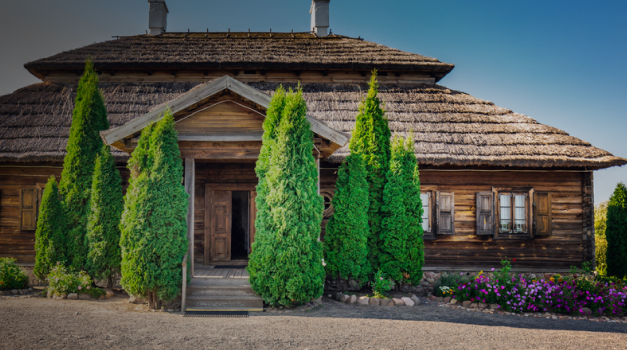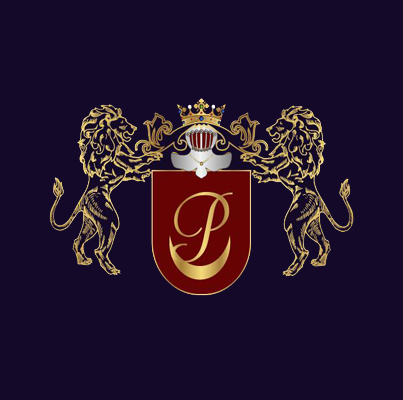City of Kosava
Excursion into the history of the city
The town of Kossovo has a rich cultural and historical heritage.
The history of the town goes back centuries. Archaeological data indicate that on the site of the present city there were ancient settlements of people dating back to the Iron Age (III / II century BC - II century AD).
In the second half of the twentieth century, a group of Soviet archaeologists (Yu.V. Kukharenko, P.V. Lysenko, P.A.Rapoport, L.D. Pobol), 2 km from Kossovo in the Merechevshchina tract, carried out excavations. They discovered a settlement. Judging by the found fragments of ceramics, the settlement can be attributed to the late stage of the Zarubintsy culture (archaeological culture of the Early Iron Age).
For several centuries (15th - 19th centuries), the owners of the Kossovo estate were such dynasties as the Khreptovichi, Sangushki-Kashirsky, Leshchinsky, Sapegi, Flemingi, Chartorisky, Puslovsky dynasties.
History of the town of Kossovo. Folvarok Merechevshchyna.
Palace and park ensemble (Puslovsky palace, T. Kostyushko memorial estate museum)
1. Excursion into history: Kossovo town, Kossovo estate, Merechevschina farm. The town of Kossovo has a rich cultural and historical heritage. The history of Kossovo goes back centuries. Archaeological data indicate that on the site of the present city there were ancient settlements of people dating back to the Iron Age (III / II century BC - II century AD).
In the second half of the twentieth century, a group of Soviet archaeologists (Yu.V. Kukharenko, P.V. Lysenko, P.A.Rapoport, L.D. Pobol), 2 km from Kossovo in the Merechevshchyna tract, carried out excavations. They discovered a settlement. Judging by the found fragments of ceramics, the settlement can be attributed to the late stage of the Zarubintsy culture (archaeological culture of the Early Iron Age). For several centuries (15th - 19th centuries), the owners of the Kossovo estate were such dynasties as the Khreptovichi, Sangushki-Kashirsky, Leshchinsky, Sapegi, Flemingi, Chartorisky, Puslovsky dynasties.
2. Tourist sites in Kossovo
2.1. St. Anthony's Church. Located in the center of the city. Built in 1868.
2.2. St. George Church. Located in the Orthodox cemetery. Built in the 17th century.
2.3. Trinity Church. Located in the center of the city. It was built in 1877 (at the expense of Vandalin Puslovsky and the parishioners) on the site of a burnt wooden church (T. Kostyushko was baptized in a wooden church in 1746).
2.4. Chapel. Located in the Catholic cemetery. Built in 1859. For the construction of the outer wall of the chapel, medieval tombstones were used.
2.5. Kossovsky palace and park complex in Merechevshchyna
Object 1: Memorial Estate Museum named after T.Kostyushko
In January 2003, by decision of the regional executive committee, a decision was made "Abandoned syadzibnaga of the house of T. Kastsyushki and the estate of the museum museum". The grand opening of the house-museum took place on September 23, 2004.
The estate was originally built in 1720. During the Great Patriotic War, it burned down (1944). After 60 years, it was restored on the foundation, which was cleared during archaeological excavations in 2003.
On February 4, 1746, Andrei Tadeusz Bonaventura Kosciuszko was born in the Merechevshchyna farm, the great son of the Belarusian land, the national hero of Poland, the USA, and an honorary citizen of France.
Tadeusz Kosciuszko descended from the old, poor Belarusian gentry, who owned from 1509. a small estate of Sekhnovichi in Beresteyskoye Voivodeship and had its own coat of arms and personal seal.
Born in the Merechevschina tract in the Ivatsevichi region.
The baptism was performed on 02/12/1746. Priest Raimund Korsak in the Kossovsky Church of the Holy Trinity.
There are about 200 T. Kosciuszko monuments in the world. His name is the highest point of the Australian continent and a city in the United States. Monuments of Kosciuszko are installed in many cities of the United States (Philadelphia, Washington, Saratoga, etc.).
Belarus also immortalized the memory of its great son. There is the village of Kostyushkovo in the Mogilev region.
In the cities: Grodno, Zhabinka, Kossovo, there are Kosciuszko streets.
Object 2. Palace of the Puslovskys - an architectural monument of the 19th century.
Palace of the Puslovskys - the first neo-Gothic palace on the territory of modern Belarus (1838)
The Puslovskys are the Belarusian-Lithuanian gentry family of the coat of arms "Sheliga". Family estate Peski (present-day Berezovsky district). The founder is Yakov Puslovsky († in 1638).
Count Wojciech Puslovsky (1762 - 1833) - the owner of Kossovo and Merechevshchyna, a person with whom the Puslovsky family flourished. He was an active investor in the restoration and preservation of material and spiritual culture in Belarus. He built and restored about 60 churches and cathedrals.
After the death of Wojciech, his huge inheritance was divided between 5 sons. The Kossovsky key was received by the youngest son Vandalin. It was to them in the Merechevshchina farm in 1838 -1843. a palace unique in its architecture was built.
Vandalin Puslovsky is the first owner of the palace and park complex. Frantisek Jaszczold (1808-1873) Polish architect, author of the project. Polish architect Vladislav Markoni (1848-1915) and Polish artist Frantisek Zhmurko (paintings and decor) worked on the interior design of the Puslovskys' palace.
The Puslovskys' palace in Merechevshchyna is one of the most beautiful neo-Gothic residences. The only monument of this type that has survived on the territory of Belarus to the present day. It was erected near the manor house of Tadeusz Kosciuszko. It should be noted that before the acquisition of the Merechevshchina farm by the Puslovskys, the Kosciuszko house and the courtyard were in a dilapidated state. In 1857, at the expense of Vandalin Puslovsky, the house was restored by the Warsaw architect Mikhail Ostrometsky.
The center of the ensemble, its core was the palace.
The palace had to go through hard times. During the First World War, the Puslovskys' palace was badly damaged. In 1915, during the retreat of the Russian army, all his valuables were taken abroad. The history of the palace in the 20-30s. The twentieth century is reflected in the documents stored in the funds of the State Historical Archive of the Brest Region.
During the Second World War, the German commandant's office was located on the territory of the Puslovskys' palace, since the border with East Prussia passed here. There was a ghetto nearby. In 1944, during the retreat of the Germans, the palace was burned down by partisans.







